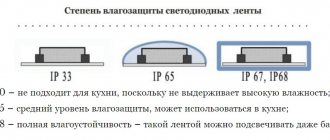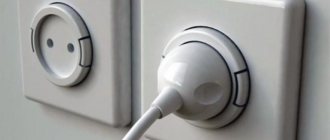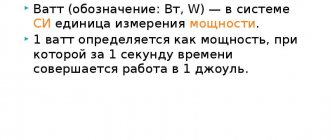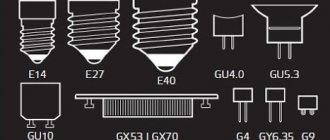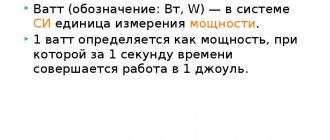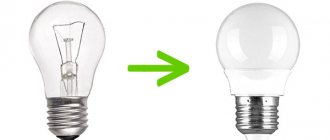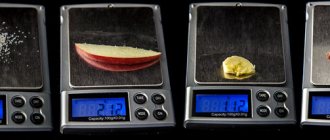Good day to all! What is so necessary in winter when the batteries are either turned off, or when they provide little heat - that’s right, heaters. Heaters help us maintain a comfortable room temperature in winter. Sometimes heating batteries is simply not enough, or heaters are used where there is no heating system, these are garages, cottages, pavilions, kiosks, etc. Before using a heater, you should first calculate how much electricity heating devices consume, and how much you will have to pay for electricity. Today we'll try to figure it out.
So, the most popular heaters are the following types:
Fan heater
A fan heater is a small gun, inside there is a coil that heats up and a fan that quickly disperses the heat; this is the cheapest and most accessible option for heating a room. The air combustion of this device is the strongest, unlike others, so its use requires periodicity, that is, switching on with short breaks. Another disadvantage of this type is the noise of the fan; there is no noise in other heaters.
How many watts are there in a kilowatt?
Almost every person is familiar with the concept of electrical power. The passport of each electrical device must indicate the power it consumes. Even on an ordinary incandescent lamp, on a glass bulb, there is a mark: 40 W, 60 W, 100 W, etc. If you look at a washing machine or microwave oven, the figures are much higher - from 500 W to 2.5 kW.
The prefix “kilo”, as for other physical quantities, is used to indicate a multiple of a thousand - the numerical value of power, which is measured in kilowatts, must be multiplied by 1000 or the decimal point moved three digits to the right. Thus, we obtain an indicator of electrical power in watts.
Answering the question posed about how many watts are contained in a kilowatt, we can give a definite answer: one kilowatt equals 1000 watts. To consolidate and practically understand the translation process, consider several examples of recording electrical power:
- 0.75 kilowatts=750 W;
- 2.1 kilowatts=2100 W;
- 3.075 kilowatts=3075 watts.
Sometimes situations arise when you need to convert watts to kilowatts. Let us remember the relationship between these values: to translate, you need to move the decimal point three digits to the left or divide the value by 1000.
Examples:
- 2300 W = 2.3 kW;
- 50 W=0.05 kW;
- 249 W = 0.249 kW.
Convection heater
Convection heater - considered one of the safest heaters, the principle of operation of a convection heater is mixing and circulation of air layers, at the bottom of the convector there is a grill through which air enters, and already heated air exits through the holes at the top. The convector has protection against tipping over and overheating; this type of heater can be hung on the wall for convenience; it has a flat shape and small size.
Read
How much electricity do TVs use?
Main conclusions
The newest LEDs have become a worthy replacement for filament sources. When purchasing quality products, there is no difference in lighting. If you think about the long term, using a traditional lighting system is not practical. Incandescent light bulbs create significant waste due to low efficiency and the need for frequent replacement.
Another important factor is the reluctance of ordinary consumers to do something new. Those who dared to upgrade their lighting system appreciated the convenience of LED products. The amounts on bills have become smaller, and there is no longer a need to turn the lights on and off several times during the evening or morning in order to save money. There is an opportunity to do what is convenient.
Infrared heater
Infrared heater - the operating principle of such a heater is based on infrared radiation, which heats various objects in the room, and the objects heat the air, this is the most natural way of heating the air. The oxygen combustion rate, in contrast to other heater models, is much lower.
Each type of heater has its own recommended room volume to fully warm it up.
Table of electricity consumption by main electrical appliances by power
Power indicators of electrical appliances will help you make calculations, develop a rational approach to energy consumption and save money. The table shows the average power indicators indicated in the technical data sheets of devices used in citizens’ apartments:
| electrical appliance | Power, W |
| Appliances | |
| Fridge | 300 |
| Lighting lamps | 20 – 250 |
| Electric stove | 7000 |
| Electric shaver | Up to 100 |
| Dishwasher | 2500 |
| TV (plasma, LCD, LCD, etc.) | 70 – 200 |
| Washing machine | 1500 – 3000 |
| Electric oven | 1000 – 4000 |
| Iron | 2000 |
| Electric kettle | 1600 – 2000 |
| Oil heater | 800 – 2500 |
| Microwave | 800 |
| Air fryer | 1200 – 2000 |
| Home fan heater | 750 – 1700 |
| Hairdryer | 450 – 2000 |
| Coffee maker, coffee machine | 600 – 1500 |
| Air conditioner | 2000 |
| Mobile phone charger | 25 |
| Vacuum cleaner | 400 – 2000 |
| Multicooker, steamer | 800 – 2000 |
| Computer | 250 |
| Laptop | 80 |
| Music Center | 50 – 500 |
| Food processor | 200 – 1500 |
| Meat grinder | 230 – 3000 |
| Blender | 180 |
| Freezers, chambers | 1500 – 5000 |
| Game console | 10 – 30 |
| Boiler | 1200 – 1500 |
| Electric tool | |
| Hammer | 600 – 1400 |
| Jigsaw | 250 – 700 |
| Drill | 400 – 800 |
What affects the electricity consumption of a heater?
The main characteristic by which you can determine how long the heater will run is the power consumption of the device. The higher it is, the correspondingly greater the electricity consumption will be. It is also worth noting that consumption depends on the mode in which it operates.
Convection heaters generally have an energy consumption of 750 W, 1 kilowatt, 1500 Watt 2 kW, maybe more. For fan heaters, consumption is 1500-2000 W per hour. For oil-based ones, the same limits range from 1000 to 2000 W/hour.
Let's calculate how much electricity the heater will consume if it operates at full power of 2000 W. In total we get 2 kW per hour. If we assume that in winter the heater heats for an hour and rests for 2 hours, we get 8 hours of operation.
2*8 = 16 kW per day, and if we take the average price for 1 kW of electricity as 4 rubles, then we get 16*4 = 64 rubles. in a day. The numbers may be lower if you initially use it at full power for a couple of hours and then use a lower consumption mode to maintain the temperature.
Read
Washing machine - how much electricity does it consume?
Based on the data obtained during the calculations, you can calculate how much electricity the heater will consume in 1 month and for the entire cold period.
Thus, in order to determine how much electricity a heater consumes, it is enough to know its power consumption in the absence of operating modes, and if there are heating modes, to know how much electricity each consumes.
Consumption in Watts
Let's move on to real numbers and for this we will first understand the units of measurement. The main indicator is power.
Power range of components:
- Processor: 55 to 150 W
- Video card: from 25 to 350 W
- HDD: 0.7 to 9 W
- SSD: 0.6 to 3 W
- RAM: 2 to 5.5 W
- Cooling systems: from 0.6 to 6 W
- Other Hardware Components: N/A
The motherboard and power supply consume little electricity and serve as conductors for transmitting it to other components. Don't forget about the monitor - this is another plus of 10-60 W.
Thus, a powerful computer under load can have a peak consumption of 600 watts. If the iron is not so productive, then things are different. For example, processors of the Intel Core i3 series are energy efficient and require no more than 55 W, and in combination with an economical video card on the GeForce GTX 1050 Ti chip (maximum 75 W) we get a total maximum consumption of only 300 W.
A few more numbers for comparison:
- The Intel Core i7-8700K processor will consume 110 W under load without overclocking.
- AMD Ryzen 3 and Ryzen 5 series processors - 65 W.
- Video card on GeForce RTX 2060 chip - 160 W.
- Video cards based on AMD Radeon RX 580 chip - 185 W.
A microwave oven consumes about 1000 W, a vacuum cleaner - from 500 to 1200 W, and a PS or Xbox game console - from 45 to 90 W.
What is the difference between a kilowatt and a kilowatt hour?
Many consumers habitually refer to electricity consumption indicators recorded by an electric meter as kilowatts. But in fact, this indicator is measured in kilowatt-hours (kWh), which is not the same thing at all.
Energy consumption in kWh is determined by the amount of power expended during a certain time.
An example of such a calculation:
- an incandescent lamp of 0.06 kW is used for lighting;
- for 6 hours of operation (approximate operating time during the day), this device will consume electricity 0.06 × 6 = 0.36 kWh;
- per month, the consumption for the specified lamp will be 0.36 × 30 = 10.8 kW*h.
Electricity consumption calculator
Electricity consumption can be calculated using an online electricity calculator . To do this, enter the following data into its fields:
- power of one or more devices (for example, light bulbs, computers or televisions);
- the price at which you buy 1 kWh of electricity;
- Operating time of the device, if the exact time is not known, take an approximate one;
- frequency and operating time per day (hour, day, month, year).
If the calculator is not displayed, go to the calculators and services section - follow this link.
You can also use our other calculators at this link.
Learn more about value ratios
Watts are derived units. This means that values are expressed using basic system units. One W is the power of one joule per second. So the power looks like this:
In addition, watts can be expressed in terms of joules and newtons.
People use prefixes to indicate that a value is a multiple of ten of its original value. Kilo is a common prefix, translated from Greek it means 1000.
If this prefix is used, it means that the indicator has been increased tenfold.
The formula for converting Watts to kilowatts will look like this:
Kilowatts refers to the power of many electrical appliances that we use every day.
These include vacuum cleaners, microwave ovens, and many other devices. Engines in cars are also calculated by this value, although in cars this value can also be represented in horsepower.
But horsepower is outside the system, and has been used since the moment when the power of a machine was calculated by the number of horses it could withstand. The kW value is quite easy to convert into them:
Thus, as can be understood from the above, 1 kW equals a thousand watts. Compared to the first formula (1), the second will look like this:
To convert W to kW, you need to increase the W value tenfold.
To obtain Watts from kW, you need to perform the reverse operation accordingly and divide the kW value by ten to the minus third power.
There are tables that can make the calculation much easier. For example:
Difference between VA and W
Electrics, like many other areas of technical fields, is replete with its own terminology, which is often difficult to understand even for people familiar with the physics section of the same name from the school curriculum. It was from there that we learned about volts and amperes; housing and communal services bills introduced us more closely to watts and kilowatts, but many terms remain a mystery, especially for amateurs or those who did not excel in physics at school.
Probably each of the owners of one or another electrical device, when studying the passport for it, has encountered discrepancies. In one case, the power consumed by the device is indicated by W (watts), in the other by VA (volt-amperes). Why different units of measurement are used, and to what extent they correspond to each other, we will try to figure it out below.
First, let's get acquainted with the concepts of reactive and active powers. Active power consumption goes entirely to performing a specific job, no matter whether it is heating water with an electric kettle, moving air with a fan, or lighting a room with an incandescent light bulb. Active power consumption is measured in watts and kilowatts (1 kW = 1000 W). However, in real electrical networks with alternating current, it is also necessary to take into account reactive power generated by nonlinear loads; it does not participate in performing useful work, however, it additionally loads the network. Therefore, the final power consumption of an electrical energy consumer (total power) is the algebraic sum of active and reactive powers, and it is measured in volt-amperes.
How are watts related to volt-amps?
So, we found out that the total power (S) is measured in VA, equal to the product of 1 ampere flowing through the terminals of the input contacts by 1 volt of the voltage measured across them. The active electrical power consumed (P) is measured in watts and kilowatts, and these two types of power are related by a power factor called cos ϕ. The power dependence is quite simple:
cos ϕ = P/S,
from it it is clear that the active power is always less than or equal to the total (cos ϕ ≤ 1). Thus, from the above formula it is clear that active power can always be determined by the formula:
P = cos ϕ S
and thus convert volt-amperes to watts.
The values of active and reactive power will coincide for a purely active load, for example, for incandescent lamps or heating elements of water heaters with a power factor almost equal to 1.
Depending on the equipment, the cos ϕ value can vary widely, and a power factor of 0.65 – 0.8 is considered to be a satisfactory value. It is necessary to be able to convert VA into watts in order to realistically assess the power of a particular device. For example, if we consider the characteristics of a UPS (uninterruptible power supply) with a declared power of 1000 VA and a current-voltage characteristic of 60%, in watts such a power source is usually capable of delivering no more than 600 watts. When calculating the load, it is also necessary to take into account the characteristics of all its components, since the total excess load in watts above 600 W makes such an uninterruptible power supply unsuitable for use.
In addition, the values of total power in volt-amperes must be taken into account when calculating electrical networks. It is the total power that requires ensuring the necessary throughput and must be taken into account when calculating the cross-sections of cables and wires and the permissible ratings of protective automatic equipment.
Still have questions?
Fill out the feedback form below, our specialists will contact you, advise you, and tell you about possible ways to solve your problem.
order a consultation
How and why to save energy based on data on electricity consumption of household appliances
There are at least two reasons why you need to save energy. This is saving natural resources and reducing harmful emissions into the atmosphere and reducing consumer expenses. Analyze how much electricity each appliance in your home consumes and whether this figure can be reduced. If the total consumption exceeds the average statistical norm of electricity consumption in Russia of 350 kW per person per month, it is enough to take simple measures. How you can save energy:
- the lights on unnecessarily ;
- if the electrical appliance is not in use, unplug it;
- use only energy-saving lamps , their high cost will quickly pay off, since they work much longer than simple incandescent lamps;
- set the computer to an economical standby mode , after a certain time the device will turn off automatically, and when switched to active mode, it will “eat” less electrical energy;
- do not leave windows open when the air conditioner is on, causing it to run idle;
- place the refrigerator and freezer away from the hot radiator and windows to protect from warm sunlight;
- defrost the refrigerator , as soon as ice has formed in the freezer, it increases electricity consumption;
- If possible, do not use adapters and extension cords;
- regularly remove scale from the kettle , it causes you to spend more electricity on heating;
- install multi-tariff meters to use energy-intensive equipment at night, when tariffs are almost twice as low.
Designation kW
Kilowatt is written as kW. It is a unit of power divided by the derived SI unit watt. Watt denotes the power at which 1 joule (J) of work is performed or energy is consumed in 1 second.
Another watt is defined as the speed of work at which a constant motion of a body of 1 meter per second is ensured, if at this time a force equal to 1 newton is overcome, going in the direction opposite to the direction of movement of the object.
The power of household appliances is measured in kilowatts. The abbreviation kilowatt denotes work:
- lamp;
- TV;
- vacuum cleaner;
- microwave;
- refrigerator;
- combine;
- mixer.
LED
Lamps of this type are even more economical and consume electricity not 5 times less than conventional light bulbs, but 7 times. That is, if we want to replace 75 watts, then an LED one will be suitable for 10 watts, while the glow will remain the same.
Having expenses for 1 month when using ordinary llamas, we get 240 rubles / 7 = 34 rubles per month, we will pay for lighting fixtures. And per year instead of 2880 we will pay 408 rubles.
Read
How much energy does a coffee machine consume?
